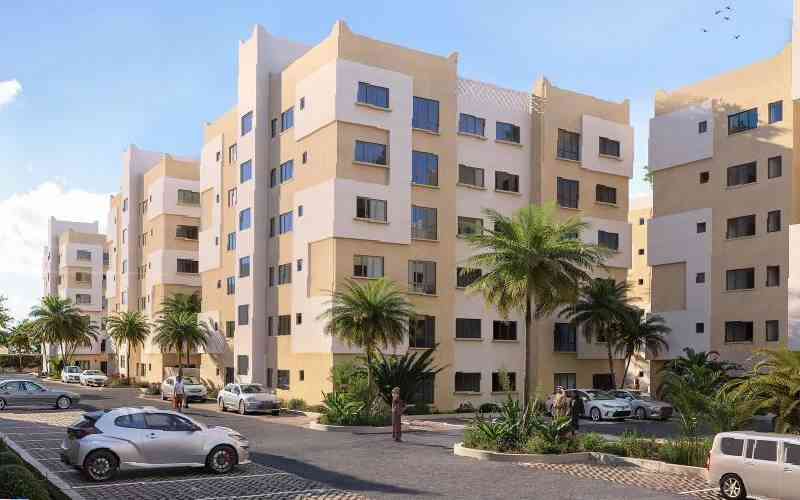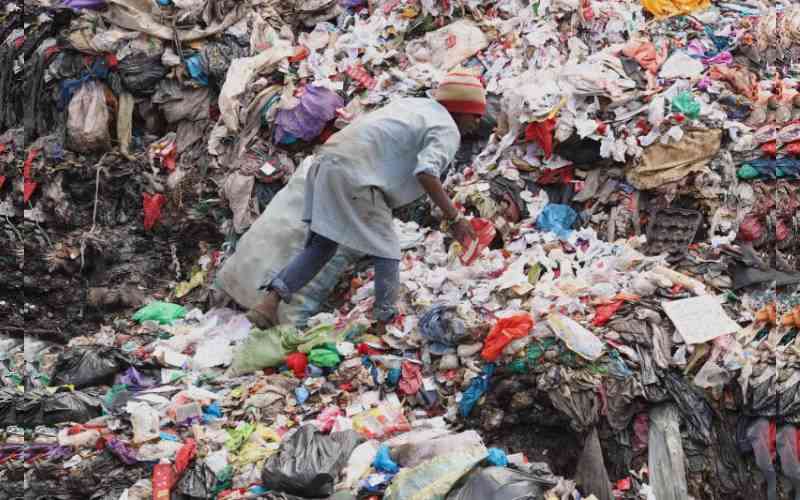By Emmanuel Were and Jevans Nyabiage
Kenya: That there has been a property boom in Kenya goes without saying. It is plain for everyone to see. Real estate agents across the country have made money. Land speculators have bet big, and so far it is paying off.
Those who owned bungalows in the once leafy suburbs of Nairobi have cashed in and sold their land to developers to put up concrete towers of apartments or offices.
Everyone seems to be making money hand over fist in real estate. And this includes cement makers.
In a couple of years, the number of cement manufacturers has doubled from three to six.
First there was East Africa Portland Cement, then Bamburi Cement and Athi River Mining. These three have been joined by Mombasa Cement, Savannah Cement and then National Cement. No other manufacturing sector in Kenya has seen such growth.
Huge potential
A director at one of the cement firms said the industry has invested close to Sh600 billion; much more than any other industry, he said. However, Business Beat could not substantiate the figure.
Cement manufacturers see huge potential for the product in an underserved market. But this begs the question: why is there such a fuss and fight over the cement market?
A report by analysts from Standard Investment Bank gives some perspective.
Most of the cement produced — about 80 per cent of Kenya’s 4.7 million tonnes in 2012 — was consumed by the private sector.
Private sector consumption, however, has been eaten into by the smaller fish in the pond — individuals putting up homes. But this is expected to shift. Drastically.
“Within the private sector, with increased urbanisation and drastic increases in the cost of land, consumption is rapidly shifting from individual home builders to large contractors building mega residential and commercial real estate,” said the SIB analysts.
Kenya’s growing cement consumption is fuelled by an upsurge in private sector-funded housing developments, foreign-funded commercial projects, and mega infrastructure projects, ranging from ports and rails to roads, financed by the Government and donors.
The analysts note that there are now more projects in real estate being completed than there were before.
Stay informed. Subscribe to our newsletter
In 2005, out of every 100 projects that were approved, only seven were completed.
Seven years down the line, out of every 100 projects that were approved, 27 were completed. This ratio is expected improve in the coming years.
Chinese contractors have helped things move along faster because their speed of execution has meant that projects that previously took several years to complete now take months.
Most of the cement players are seeing new opportunities in real estate and infrastructure in the country, and the region, five or 10 years down the line from now. This is why they are putting up more plants.
“We are seeing big buildings and apartments coming up. This is demand that is fairly strong coming in at one go,” said Mr Francis Mwangi of SIB.
Race for limestone
The fierce competition in the cement sector has led to a neck-and-neck race to control limestone deposits across the country.
Limestone is burned at very high temperatures to make clinker. This clinker is then mixed with gypsum to produce cement.
There are two types of cement plants: an integrated plant is one where the clinker is produced and then mixed with gypsum to make cement; the second type is a grinding plant — clinker is not produced at this plant; it is either imported or bought locally from a competitor who has it. The clinker is then mixed with gypsum to produce cement.
Therefore, those who have access to limestone deposits have a competitive advantage because they can produce their own clinker and keep a larger share of profits.
The battle lines for limestone have been drawn, with players setting aside billions of shillings to increase capacity and set up new clinker plants.
Most manufacturers import semi-finished cement or clinker from China and the Middle East, which is then ground into cement. In 2012 alone, over 1.2 million tonnes of clinker were imported.
A clinker plant would allow cement manufacturers to capture the entire value chain, giving them a clear advantage in costing their products in a market that is growing.
Nairobi Securities Exchange-listed cement manufacturer East African Portland Cement, which has in the past three years been weighed down by boardroom wrangles, is reported to be conducting feasibility studies with a view to setting up a clinker plant in Kitui by 2016.
Kajiado and Kitui are two areas where limestone has not been exhaustively mined.
Kitui has already attracted Africa’s richest man Aliko Dangote, as we reported last week (see www.standardmedia.co.ke/businessbeat).
NSE-listed cement maker, ARM, also plans to set up a $400 million (Sh34 billion) cement plant in the county.
ARM Managing Director Pradeep Paunrana said the firm has received support from the Kitui County government, which is headed by Governor Julius Malombe.
Coveted materials
“We are optimistic that in the next few months, we will move on site for the ground breaking to pave way for construction to begin,’’ he said, adding that the Kitui plant would take three to four years to construct.
Once complete, it is expected to double ARM’s total annual cement and clinker production capacity to five million tonnes in six years, up from the current 2.5 million tonnes.
With most firms eyeing the coveted raw material, the fight for Kitui’s mines — which a few years ago locked Bamburi Cement and ARM Cement in a court battle for control of a 180 square kilometre piece of land endowed with limestone — is expected to be rekindled.
What seems to be behind this reaction is the news that Mr Dangote will pump Sh34 billion into a three million metric tonne cement plant in Kitui.
The county is also close to the Mui Basin, which has large coal reserves. Most cement firms are turning to coal to power their plants as opposed to oil fuel, which is expensive and prone to price volatility. Kenya imports the bulk of its coal from South Africa.
Though having gone quiet on Kitui, Bamburi Cement, majority owned by French giant Lafarge, is also said to harbour ambitions of setting up shop in the semi-arid county.
In Tanzania, apart from the Dar es Salaam plant, ARM has a clinker plant under construction in Tanga, which will have a 5,000-tonne capacity per day once it is completed in June this year.
“By the end of 2015, and with all our plants operational, ARM will be the largest cement and clinker manufacturer in the region,’’ Mr Paunrana said, adding that with the ongoing infrastructure projects, the region needs more cement.
“EAC alone imports nearly 50 per cent of all its clinker,’’ he said.
National Cement, Mombasa Cement and Savannah Cement, who are recent entrants into the cement market, are also pumping billions of shillings into new projects.
Bigger investments
Savannah Cement, a consortium of Chinese and Kenyan investors, has set up a Sh10 billion plant in the country, with a capacity for 1.5 million tonnes a year, and is planning to invest another Sh15 billion in a clinker plant in the second phase of the project.
Savannah Cement is a joint venture comprising Savannah Heights — a consortium of Kenyan investors — Wan-Ho, a Chinese investment firm, and Catic Cement (Kenya), sharing the stakes at 40 per cent, 40 per cent and 20 per cent, respectively.
Cemtech Kenya, a subsidiary of Sanghi Group of India, is also putting up a Sh11.6 billion cement factory in West Pokot.
National Cement, which already has a clinker plant, announced a few weeks ago that a Sh6.4 billion investment from the World Bank’s International Finance Corporation would help it strengthen its operations in Kajiado. The company can access limestone and clay deposits in the county.
Cement fetches better prices outside Kenya, so some of the manufacturers are increasing capacity to export the product.
In Kenya, a tonne of cement goes for Sh12,040 ($140), while in the export market, the same quantity fetches Sh21,500 ($250).
South Sudan is on the bumpy road of rebuilding its economy, and so is DRC. These two economies will need a great amount of cement.
CW Group, a global firm that tracks cement manufacturing, projects that Kenya’s cement per capita consumption will for the first time surpass 100 kilos per person this year.
In a 2013 report, the organisation predicted that the increased investment in cement would increase Kenya’s annual production capacity to over 11.1 million tonnes by the end of 2017.
At the end of 2012, Kenya’s cement production was at 4.63 million tonnes, according to the Kenya National Bureau of Statistics.
[email protected]
 The Standard Group Plc is a
multi-media organization with investments in media platforms spanning newspaper
print operations, television, radio broadcasting, digital and online services. The
Standard Group is recognized as a leading multi-media house in Kenya with a key
influence in matters of national and international interest.
The Standard Group Plc is a
multi-media organization with investments in media platforms spanning newspaper
print operations, television, radio broadcasting, digital and online services. The
Standard Group is recognized as a leading multi-media house in Kenya with a key
influence in matters of national and international interest.
 The Standard Group Plc is a
multi-media organization with investments in media platforms spanning newspaper
print operations, television, radio broadcasting, digital and online services. The
Standard Group is recognized as a leading multi-media house in Kenya with a key
influence in matters of national and international interest.
The Standard Group Plc is a
multi-media organization with investments in media platforms spanning newspaper
print operations, television, radio broadcasting, digital and online services. The
Standard Group is recognized as a leading multi-media house in Kenya with a key
influence in matters of national and international interest.









